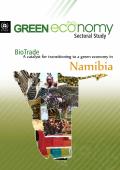The paper explores the concept of ‘green growth’ as it has emerged in international policy discourse over recent years. Identifying the core meaning of the concept and sister terms such as ‘green economy’, it relates green growth to the prior concept of sustainable development. The paper distinguishes between a ‘standard’ version of green growth which asserts the long-run economic benefit of environmental protection and a ‘strong’ interpretation which claims, more boldly, that environmental policy can be a driver for growth. Three different forms of this claim are identified and the evidence for them surveyed. The first is a Keynesian argument for short-term ‘green stimulus’ in times of recession. Second, a revision of standard growth theory identifies the contribution made to growth by investment in natural capital and the correction of a variety of market failures through environmental policy. Third, the theories of comparative advantage and long waves of capitalism emphasise the importance of technological innovation in generating growth.

Low carbon growth seeks to promote economic development while keeping emissions low, or lower. Although Ghana is not responsible for the greenhouse effect, low carbon growth can be beneficial to Ghana. In the short term, pursuing low carbon growth helps identify options that have direct economic and development benefits and can open access to international climate support. In the long term, depending on the effect climate change has on prices and trade, low carbon growth may increase the competitiveness of the economy.
The growing global demand for medicinal and aromatic plants (MAPs) could help drive Nepal’s green economy, while improving livelihoods in its poorest communities. The study focuses on the cultivation, processing and trade of high-value MAPs, which are found in the forests and grasslands of the mountains in the northern part of the country. Given Nepal’s high degree of biodiversity, the study confirms Nepal’s significant potential to develop its BioTrade sector. This study is part of Capacity Building for BioTrade (CBBT) project, which is implemented by UNEP with financial support from Germany, and has conducted similar studies in Namibia and Peru.
